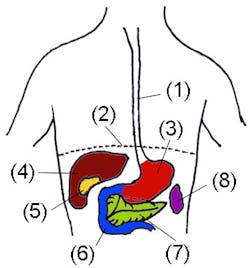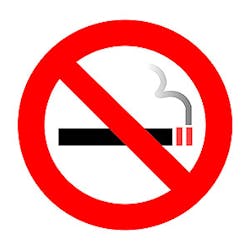Dental implant technology has improved and materials (such as nanotubes) and the understanding of osseointegration is increasing. Dental implants have become almost mainstream now, but not without their issues. A systematic review of long-term tooth and implant survival rates was conducted and demonstrated that implant survival rates do not exceed those of compromised but adequately treated and maintained teeth. This supports the concept that the decision to extract a tooth and place a dental implant should be made with much critical thought. Even when a tooth seems to be compromised and requires treatment to be maintained, implant treatment also might require additional surgical procedures that could pose some risks. As well, a tooth can be extracted and replaced at any time. Extraction is a definitive and irreversible treatment.
Regarding tobacco cessation, authors piloted a single-visit smoking cessation group intervention conducted by a pharmacist (NP) and health coach (HW).(5) 2-tiered approach consisting of counseling and pharmaceutical treatment are often recommended by US Public Health Service guidelines.(6,7) Because primary care physicians are busy caring for other patients, and pharmacists in their state (Michigan) can prescribe medication under collaborative practice agreements with physicians, they conducted this study with a NP and HW.
Patients were recruited from two primary care practices to participate in a 2-hour group visit that included both behavioral and pharmacologic interventions. Follow-up phone calls and in-person visits with the health coach were made available, but were not part of the structured curriculum.
The authors used motivational interviewing (MI) to assist patients in developing individualized quit plans and offered small rewards for stopping, such as a note pad and 6-month certificate. Patients did not pay for the group visit, but were required to pay for pharmacotherapy (health insurance or out of pocket).
Between September 2011 and May 2012, a total of 35 patients attended one of 7 smoking cessation group visits. Twenty-seven (77%) participants opted for medication or nicotine replacement therapy and 23 (65.7%) used the health coach services. As of June 2012, with participants ranging from one month to 9 months’ follow-up, 23% remained tobacco free. This compares with documented one-year quit rates of 3% to 5% (unassisted), 7% to 16% (with behavioral intervention), and up to 24% with pharmacologic treatment and ongoing behavioral support.(7)
Challenges included variable reimbursement from insurers for pharmacist-led tobacco cessation group visits and different pharmacy policies, as pharmacists are not allowed to prescribe medication in every state. This may be helpful for cessation efforts in the dental office.
References
1. Levin L and Halperin-Sternfeld M. Tooth preservation or implant placement: A systematic review of long-term tooth and implant survival rates. The Journal of the American Dental Association. October 1, 2013 vol. 144 no. 10 1119-1133.
2. Lau C, Kim Y, Chia D, Spielmann N, Eibl G, Elashoff D, Wei F, Lin Y, Moro A, Grogan T, Chiang S, Feinstein E, Schafer C, Farrell J and Wong DTW. Role of Pancreatic Cancer-derived Exosomes in Salivary Biomarker Development. The Journal of Biological Chemistry, 288, 26888-26897. September 13, 2013.
3. van der Pol E, Böing, AN, Harrison P, Sturk A, Nieuwland R (2012). "Classification, functions, and clinical relevance of extracellular vesicles". Pharmacol. Rev. 64 (3): 676–705.
4. http://www.osap.org/?page=Issues_HepC.
5. Paterson N, Wiest H, and Fiscus L. Our success with a single-visit smoking cessation intervention. J Fam Pract. 2013 July; 62(07):334-336.
6. Fiore MC, Jaen CR, Baker TB, et al. Treating tobacco use and dependence: 2008 update—clinical practice guideline. Available at: http://bphc.hrsa.gov/buckets/treatingtobacco.pdf. Accessed July 21, 2012.
7. Laniado-Laborin R. Smoking cessation intervention: an evidence-based approach. Postgrad Med. 2009; 122:74–82.
Sincerely,












